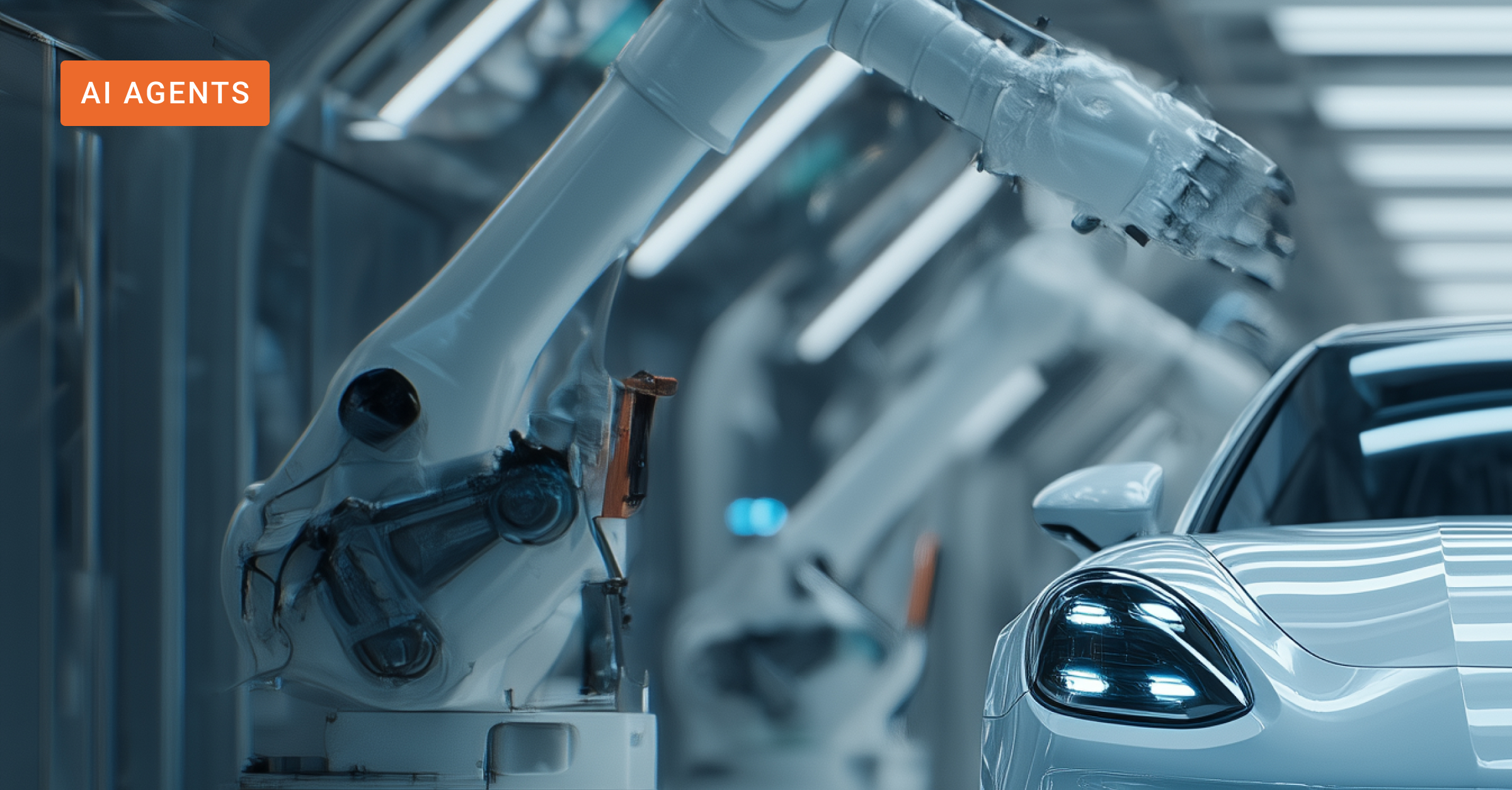There’s a powerful new force emerging in the enterprise: AI agents, autonomous digital workers poised to transform how we operate, promising increased productivity, quality, and growth. For some, this future is exhilarating; for others, it's unsettling. But let's pause and take a deep breath: organizations aren’t about to blindly entrust business-critical processes to generative AI. In fact, they’d even be reluctant to do so if it performed perfectly most of the time.
Let's go ahead and unpack this evolution.
Why Agentic AI Demands Unwavering Accuracy
Imagine an AI agent managing a complex, multi-step business process – say, orchestrating a global supply chain or handling a customer's multi-faceted service request. In such scenarios, agentic AI needs deterministic accuracy. Why? Because even a small error in one step can have cascading effects, compounding exponentially, leading to significant, unwanted, and often costly outcomes down the line.
We’re not talking about minor inconveniences here. An inaccurate inventory update, a misrouted shipment, or a flawed financial projection based on erroneous data points can ripple through your operations, impacting profitability, customer satisfaction, and even regulatory compliance. Trustworthy AI, where each foundational action needs to be precise and predictable is vital for agentic AI to truly bear the heavy lifting, it.
The Probabilistic Nature of GenAI Meets the Precision of Structured Knowledge
Here's where the plot thickens. Generative AI (GenAI) is inherently probabilistic, or non-deterministic. It’s great at generating creative text, summarizing, and ideating by predicting the most probable next word or concept. But in a business environment where accuracy is paramount – where "probably correct" isn't good enough – it isn’t. Hallucinations, inconsistencies, and a lack of explainability can easily creep into raw GenAI outputs.
In such scenarios, structured knowledge can become a strategic advantage. Working with precise, machine-readable knowledge formats – enterprise taxonomies, ontologies, and semantic knowledge graphs – is a powerful counterweight to GenAI's inherent non-determinism. Simpflying slightly:
- Taxonomies provide standardized categories.
- Ontologies define the relationships and rules between those categories.
- Knowledge Graphs connect these concepts and relationships into a rich, interconnected web of validated facts.
This rigorous structure transforms human-readable knowledge into the precise, machine-readable format that retrieval augmented generation (RAG)-based GenAI needs. This fundamental shift opens the door to truly deterministic AI, where GenAI outcomes can be predicted with high confidence. This is where hybrid unstructured and structured RAG excel, particularly with a knowledge graph and RAG, or graphRAG, approach.
Overcoming The Trust Gap with Humans in the Loop
Despite these monumental improvements in accuracy and determinism, you’ll be hard pressed to find organizations that are prepared to blindly hand over complex, high-stakes operations to AI agents. It will take time for people to build the confidence needed for agentic AI to do any real heavy lifting unsupervised.
Until then, humans will stay in the loop, not for tedious tasks like repetitive data entry or simple oversight. Instead, they will be tasked with smart oversight, shifting from execution to strategic monitoring, exception handling, and providing nuanced judgment that AI, for the foreseeable future, simply cannot replicate.
A Real-World Scenario: Orchestrating the Supply Chain with Intelligent Oversight
Let's bring this to life with an example: managing a critical component of a global supply chain that delivers a shipment of car parts, produced in Poland, just-in-time to a production plant in Germany.
The AI Agent's Heavy Lifting:
In this example, the AI agent is powered by a comprehensive knowledge graph of the global supply chain, including logistics routes, supplier contracts, customs regulations, historical transit times, and real-time sensor data from shipments.
- The AI agent proactively identifies the optimal transport method (trucking via specific routes).
- It automatically books the freight, generates all necessary customs documentation, and schedules pickups.
- It constantly monitors the shipment's GPS, weather patterns, traffic conditions, and geopolitical updates.
- If a minor delay is detected (e.g., a brief road closure), the agent instantly recalculates the ETA, informs the production plant, and automatically adjusts subsequent dependent schedules within the plant's system.
This approach of autonomous AI agents and AI agent orchestration may well meet the expectations of its users – at least most of the time.
The Human Touch: Strategic Oversight for Unforeseen Challenges
But now, imagine this: The shipment is midway when a sudden, unexpected border protest erupts. This isn't a routine traffic jam; it's a complex, unpredictable human event that could halt the shipment for days.
The AI agent immediately flags a significant, unresolvable delay. It can present potential reroutes and their calculated costs, but it cannot assess the fluid geopolitical situation, anticipate local reactions, or gauge the long-term impact on driver morale or future border stability.
This is where a human Supply Chain Strategist steps in. The agent automatically escalates the specific problem, providing all relevant data: current location, expected delay, alternative routes, and their associated costs.
After reviewing the situation, the human agent makes a quick call to a local contact for on-the-ground intelligence, cross-references news feeds for political context, and recalls a similar protest two years ago that escalated quickly. Based on this nuanced, human judgment, she decides against the calculated reroute (which might lead to another, less obvious bottleneck) and instead instructs the AI agent to:
- Negotiate an immediate, albeit more expensive, air freight option for the most critical components to prevent line stoppage.
- Redirect the remaining truck shipment to a secure, nearby warehouse for temporary storage until the protest resolves, minimizing risk.
- Initiate communication with suppliers and the German plant about the refined plan, offering reassurance and contingency details.
The AI agent then executes these complex instructions with lightning speed, managing bookings, notifications, and rerouting automatically.
This intervention wasn't about micromanaging; it was about applying unique human insight to an unforeseen, non-deterministic challenge, leveraging the AI's speed and data processing power to implement a strategically sound solution. In these situations, the distinction between AI vs human capabilities is stark and the value of human-AI collaboration is undeniable.
Augmented intelligence, with human-machine teaming.This is smarter human-in-the-loop: elevating human judgment, not replacing it.
The Value Proposition: Beyond FTE Reductions
Countering the narrative of human obsolescence, the true value of this evolving partnership isn't simply about cutting full-time equivalents (FTEs) – though operational efficiencies will naturally emerge. For business leaders, the real prize lies in:
- Productivity Improvements: AI agents handle the repetitive, data-intensive tasks, freeing your high-value employees to focus on strategic thinking, problem-solving, and innovation.
- Enhanced Quality & Consistency: With deterministic accuracy driven by structured knowledge, processes become more reliable, reducing errors and ensuring consistent service delivery.
- Increased Agility & Resilience: Organizations gain the ability to react to dynamic market conditions or unforeseen disruptions with unprecedented speed and informed decision-making.
- Significant Cost Savings: While not just about FTEs, optimized processes, reduced errors, and faster throughput translate directly into lower operational costs.
- Accelerated Innovation: By handling the foundational data work, AI agents free up human intellect to explore new ideas, develop new products, and identify novel market opportunities.
- Superior Customer Satisfaction: Faster, more accurate responses and resolutions, driven by intelligent agents, lead to happier customers and stronger brand loyalty.
- Enhanced Compliance & Risk Management: Knowledge Graph-powered agents can meticulously track regulatory requirements and internal policies, dramatically reducing compliance risks.
- Better Resource Utilization: With human-centered AI, your most valuable asset – your human capital – is deployed where it creates the most impact, fostering engagement and job satisfaction.
Ultimately, an AI investment strategy is about augmenting human capability to achieve previously unimaginable levels of performance and insight. The organizations that embrace this partnership will define the next era of competitive advantage. The ones that don't... well, they risk being left behind, grappling with messy data while competitors sprint ahead with truly intelligent operations.
Conclusion: The Future is a Smart Partnership
The narrative around AI agents needs a recalibration. Far from being a threat to human roles, the rise of agentic AI, particularly when grounded in robust knowledge graphs, ushers in an era of unprecedented human-AI collaboration. Our role isn't disappearing; it’s being elevated to one of strategic oversight, nuanced judgment, and creative problem-solving.
"Human-in-the-loop" isn't going away. It's just getting smarter, more critical, and more impactful than ever before. For leaders ready to harness this intelligent partnership, the future holds immense possibilities.
Ready to see how GenAI delivers deterministic accuracy and unlocks true enterprise value for your business?
Download our essential guide, "Closing the Accuracy Gap in Generative AI," to dive deeper into the technicalities and strategies required to build trustworthy AI agents.
Even better, why not see it in action? Book a personalized demo with our experts. We'd love to show you firsthand how our solutions can integrate with your specific needs, answer your questions, and discuss how intelligent human-AI collaboration can redefine your team's capabilities.
Let's chat about building a smarter future together. Get in touch today!








